Seshasayee Paper and Boards Limited has made continuous capital additions throughout its journey to enhance its all-round performance on products, process, environment, and sustainability parameters and has been financially steady amid adverse policy and market conditions. With many accolades for its conservation and environment management approaches, the mill has been reckoned as the pioneer of balancing environment with papermaking business.
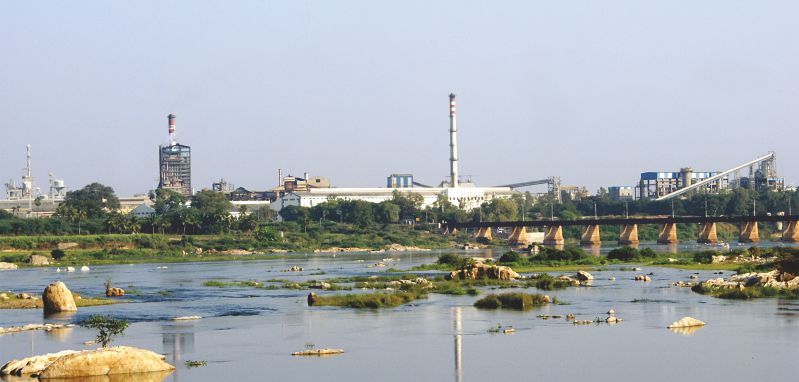
Paper Mart recently conducted a detailed interview with Mr. N Gopalaratnam, Chairman, Seshasayee Paper and Boards Limited and was briefed on a number of developments at the company and in the industry including some salient issues as growing import threat and international competitiveness of the domestic industry. Excerpts:
Paper Mart: Tell us about the journey of Seshasayee Paper and Boards Ltd so far. What have been the major landmarks of the company?
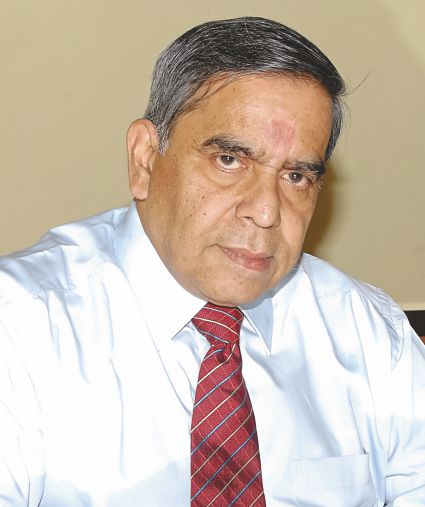
Seshasayee Paper and Boards Limited
N Gopalaratnam: Seshasayee Paper and Boards Limited (SPB) was established in the year 1960 in collaboration with the well known American Paper Industry Group Parsons and Whittemore.
The venture was the brain-child of Sri S.Viswanathan (SV), a Trade Union Lawyer turned freedom fighter turned industrialist, belonging to the House of Seshasayee, well-known for its entrepreneurial skills.
SPB was established in 1960 as an integrated pulp and paper mill to manufacture 20,000 TPA of writing & printing paper and MG boards per annum, based on sugarcane bagasse as the main raw material, supplemented by bamboo. To secure supply of bagasse, the company had installed oil fired boilers in a neighboring sugar mill to provide steam for its operations and to get bagasse released as per an agreed formula. This was indeed a bold and unique approach conceived by SPB to ensure raw material security.
Government of Tamil Nadu actively supported the establishment of this paper mill and participated significantly in the equity capital of the company. It remains till today the single largest shareholder.
Well designed production facilities were incorporated in the mill design including a unique two-tube horizontal continuous digester for pulping bagasse as well as bamboo. This rapid digester, known as Pandia digester, was indeed an innovation to handle two disparate raw materials, in a single digester.
The late sixties and early seventies witnessed huge spurt in oil prices which made the exchange rate for bagasse unviable, which forced the company to terminate this arrangement and turn to tropical hard woods to make up the shortfall.
The company grew in size, added duplex board and yankee poster to its product portfolios in 1969. An MF Machine was added in 1979. A state-of-the-art high speed machine was installed in the year 2000. The current product mix includes writing & printing, MG Boards in white and colours, colour printing, light-weight posters and kraft, high quality maplitho, copier grades and one-side coated papers. Current capacity is 125,000 TPA (Unit 1).
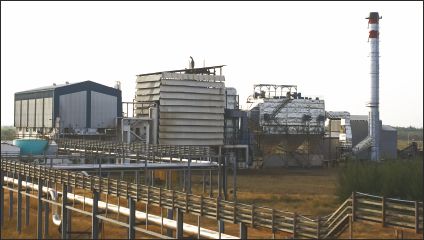
The company promoted a 3500 TCD sugar mill (Ponni Sugars) in 1984 as a backward integration, to secure bagasse supply by providing the steam requirements of the sugar mill.
Simultaneously, Mr. S.Viswanathan, at the behest of Govt of Tamil Nadu, took the courageous step of promoting Tamil Nadu Newsprint and Papers Ltd in 1985 as a mighty competitor to SPB. Mr. S.Viswanathan’s early recognition of the need to develop bagasse as an alternate raw material for paper making, in this wood fiber deficit nation, and his relentless drive to secure excise concessions for usage of this unconventional raw material for paper manufacture paved way for creation of a huge base of paper production through unconventional raw materials and recovered fiber. Today, 2/3rd of country’s paper production is the contribution of this Sector. Mr. SV has been rightly regarded as the ‘Father of the Indian Agro Paper Industry’.
The company promoted an innovative Lift Irrigation Scheme in 1985 to provide treated waste water to farmers for growing sugarcane in about 2000 acres of dry lands. The sugarcane produced is supplied to the sugar mill which in turn supplies bagasse to the paper mill. This Tri-partite (SPB, Farmers and Ponni Sugars) arrangement has been in successful operations for the last 30 years. This unique Lift Irrigation scheme has been commended for its novel and innovative strategy to turn dry lands into green cane fields.
With a view to achieve total environmental compliance, the company installed a 400 TPD RDH pulp mill in 2008 along with an ECF fiber line. The bagasse pulping line was also converted to ECF.
In the year 2011, the company acquired a sick paper mill capable of producing 60,000 – 80,000 tonnes of printing and writing paper per annum. This Unit, Tirunelveli, is well equipped with a modern paper machine with top wire/metering size-press to produce quality maplitho and copier grades of paper. It has an advanced 300 TPD Metso de-inking plant which produces high quality de-inked fiber for use in the furnish for paper making. The mill has since been turned into a profitable venture.
SPB currently produces about 190,000 tonnes of paper and markets the same through well established trade channels. The company practices the unique system of closing the year with zero stock which has been achieved 20 times in the last 24 years.
SPB had got its quality management system certified under ISO 9001 in 1996, environmental management system with ISO 14001 in 2000 and health and safety management system with OHSAS 18001 in 2007. In addition, SPB has been certified with Forest Stewardship Council (FSC) in 2010 for its raw material procurement.
SPB has won several Awards for energy conservation, effective environment management, Innovation in energy, safety, etc. The company has been certified GreenCo Gold Rating by the prestigious CII GreenCo Programme. SPB was conferred the prestigious Tamil Nadu Government’s Green Award for the year 2017. The company’s products are widely exported to over 25 countries including USA. SPB also exports stationery to USA and some African countries. SPB holds a certified Export House Status.
PM: Is there any new addition to your product portfolio? If not, do you plan any new addition? Also, brief us about every segment which is going to grow in India.
NG: SPB has a wide product portfolio comprising quality maplithos, copier grades, book printings, MG bristol, yankee posters and kraft, colour printing grades, etc. Many grades are upgraded to meet specific needs of customers.
Recent additions to our product mix include special diary paper for export market, parchment papers, laid envelope paper, UV negative posters, etc.
The Indian paper industry is growing steadily and India’s share in global paper demand is gradually increasing. The industry is widely predicted to be the fastest growing industry globally and is estimated to grow at a CAGR of 6.6 percent, leading to a demand of 18.5 million tonnes in 2018-19. As per CARE rating, writing & printing segment is expected to grow at a CAGR of 4.2 percent to 5.3 million tonnes, packaging grades to grow at a CAGR of 8.9 percent to reach 9.7 million tonnes.
Major challenges are unbridled imports from ASEAN countries at zero duty, escalating cost of fibre in general, and to mills in the South, extreme drought and shortage of river water due to recurring failure of monsoons.
PM: Amid prevailing market conditions, how has Seshasayee performed in the last few years? Do you have any capacity or product expansion plan for the near term?
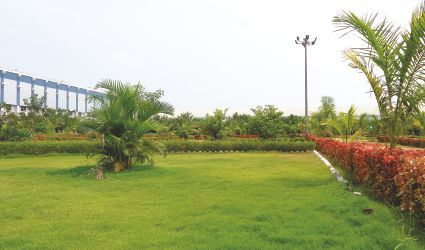
NG: We have made several capital additions in the last few years to strengthen our production facilities and enhance quality of pulp and paper. We had continued to perform well even under adverse conditions like water shortage, initial hiccups associated with introduction of GST, demonetization and above all, unfair competition from surging imports of copier grades and maplitho from ASEAN countries taking advantage of zero duty concession.
Prices of imported coal and imported pulp moved up sharply last year, as indeed oil prices, increasing the cost of production significantly. Weathering all these adverse happenings, the company posted good physical and financial results and distributed handsome dividends to shareholders.
PM: As regards to environmental compliance, what steps has Seshasayee taken in totality so far? How do you assess the success of those steps taken both quantitatively and qualitatively in the areas of energy, water, and chemical recovery? Please elaborate.
NG: The company provides utmost attention to pollution prevention and environmental protection. In our Unit 1, as well as in Unit 2, we have incorporated adequate facilities to control pollution and achieve desired parameter in compliance of PCB norms. SPB has taken many initiatives to control pollutants ‘at source’ than control at the ‘end of the pipe line’. Our treatment facilities are extensive to achieve norms. For emissions, our boilers and lime kiln are equipped with adequately sized ESPs to control emission. Both our liquid effluent and emission steams are equipped with online continuous effluent/emission monitoring system (OCEMS) connected to both State Pollution Control Board and Central Pollution Control Board.
We have, in the last 2 years, made significant investment in improving our environmental protection facilities. A twin press roll in wood fiber line and an additional ESP for the chemical recovery boiler have helped us in achieving the desired norms both for liquid effluent discharge and gaseous emissions. On the solid waste management side, the sludge from the effluent treatment plant is used by board making units. Solid wastes like chipper dust dry pith and screen rejects are being used as bio-fuels. Entire lime sludge is recovered in-house in rotary lime kiln and the purged quantity is sold to neighboring cement plant. Boiler fly ash is used for brick manufacturing and no part of solid waste is carted out for land-filling.
We have been constantly implementing schemes to conserve energy and water consumption besides improving our Chemical Recovery. We could bring down our water consumption by 35 percent in the last 2/3 years, specific steam consumption by 12 percent and specific power consumption by 6 percent.
GHG Emission has been brought down by 10 percent in the last 2 years. With the carbon sequestration through our tree farming and sugarcane cultivation together with lower usage of on fossil fuels, the company has become C-Positive.
PM: You have been an eloquent speaker on key environmental issues in various forums and a constant guide for the pulp and paper industry with respect to various environmental challenges. What do you think is the most pressing environmental issue for the industry as of now? How should the industry proceed in tackling that?
NG: Paper industry is a resource intensive industry – be it water, power, steam etc. The pressing challenge faced by all units is environmental sustainability. Mills have to raise the wood required for their process. The Indian paper industry meets nearly 85-90 percent of its wood requirements through agro forestry/social forestry/tree farming etc. The industry has to reduce consumption of water, dependence on fossil fuels etc.
Fortuitously, paper is a noble product – reusable, recyclable and biodegradable. It is a socially desirable, economically viable, and ecologically sustainable product. Its tactile characteristics are unmatched. Its ‘retain – recall – retrieval’ properties and sustainability features will ensure its growth. Agenda for the Paper Industry is to become environmentally sustainable.
PM: In order to address the raw material crunch, the Indian mills are now resorting to agro- and farm-forestry. Do you have any such plans being a wood-based paper manufacturing company? Any concrete blueprint developed for this?
NG: The company has an ongoing farm forestry program since 2005 to augment pulpwood raw material availability and to become self sustainable in meeting our wood requirements through plantations established in non-forest areas. Our farm forestry model uses unused cultivable lands owned by marginal farmers for raising eucalyptus or casuarina or Melia dubia as a commercial venture for sale to market and to paper mills including our company.
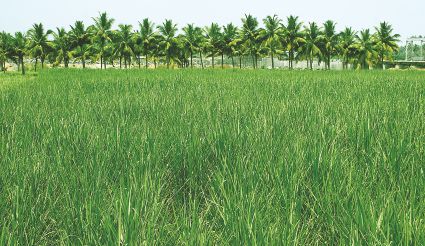
The company has a well equipped nursery to produce clonal seedlings and has established over 20 satellite nurseries, closer to areas of cultivation and provides limited clonal seedlings (25 lakhs annum) and over 12 crores of bare rooted seedlings from various satellite nurseries.
Plantation area covered is about 15,000 to 20,000 acres annually and we expect the 3 year cycle for casuarina and 5 year cycle for eucalyptus would yield about 5 lakhs tonnes of wood annually, equivalent to our current requirement of wood for pulp production. The farmers are free to sell the trees when harvested to people of their choice including to our Company.
Our requirements of bagasse are met by from our associate sugar mill, promoted by us. We have thus ensured total raw material security.
PM: Your comments on the present state of the India paper industry, with a special focus on W&P segment and its outlook for future.
NG: Paper industry is capital intensive and yields poor returns on investments. To enhance the competitiveness of the Industry, the Govt. must address the issues of creation of robust raw material base as well as extending fiscal incentives for assimilation of eco-friendly technologies, etc.
International competitiveness is the key issue that is confronting the Indian paper industry, today especially in the context of surging imports from ASEAN countries at zero duty and the Government’s resolve to have RTAs/FTAs with EU and other nations as well.
The major players in the paper industry, alive to the emerging international threats, have been aggressively pursuing quality improvement programs, coupled with cost rationalization and capacity additions. Increasingly, more up-to-date technologies are sought to be implemented, with added focus on environmental compliance.
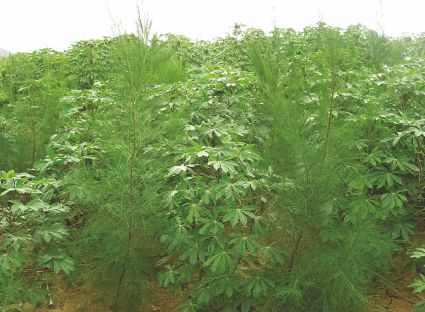
Imports of paper and paperboard into India have been steadily increasing in the last 6 years. Imports have risen at a CAGR of 18 percent under the India-ASEAN FTA. The basic customs duty on paper and paperboard has come down to nil rate from 2014. Consequently imports of paper and paperboard have grown at a staggering CAGR of 43 percent.
Similarly, under India-Korea CEPA, imports duty has come down to nil and imports of paper and paperboard have grown by a 60 percent CAGR. Imports of paper from countries where cost of wood is at least USD 30/tonne lower and consequently the final product is cheaper have unsettled the Indian markets. Domestic Mills are the causality.
The outlook for the global paper and forest products industry remains stable, as per a report of Moody’s Investment Service. As per this report, overall operating earnings will grow modestly over the next 12-18 months, though escalating costs will dampen the benefit of higher prices. Among subsectors, packaging grades, tissue and market pulp will carry stable outlooks while paper segment will remain negative. CRISIL however has opined that in India firm prices of writing and printing paper and falling cost of production due to efficiency improvements are bolstering the profitability of domestic writing and paper manufacturers.
This CRISIL study indicates improved cash-flows of printing and writing paper manufacturers which will help them reduce the net debt sharply. In contrast to the subdued global demand growth for writing and printing paper – at less than 1 percent, domestic consumption is buoyant at 5-6 percent year-on-year, driven by rising literacy, growing school enrolment rates and higher promotional spends.




